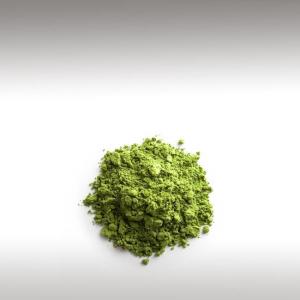
GREEN TEA EXTRACT (CAMELLIA SINENSIS) - INGREDIENTS

BASE / GENERAL DATA
Information submited: June 8, 2015 Modified: May 30, 2018 By: OperaDreamhouse
A Green Tea Extract is a herbal derivative from Green Tea Leaves (Camellia Sinensis). Containing antioxidant ingredients - mainly Green Tea catechins (GTC). Green Tea and its derivatives are sometimes used as dietary supplements and in alternative medicine.
Camellia Sinensis plant is originally cultivated in East Asia, this plant grows as large as a shrub or tree. Today, Camellia Sinensis grows throughout Asia and parts of the Middle East and Africa.
Camellia Sinensis is a species of evergreen shrub or small tree whose leaves and leaf buds are used to produce tea. It is of the genus Camellia of flowering plants in the family Theaceae. Common names include "Tea Plant", "Tea Shrub".
Camellia Sinensis is an evergreen shrub or small tree that is usually trimmed to below 2 m when cultivated for its leaves. It has a strong taproot. The flowers are yellow - white, 2,5 - 4 cm in diameter, with 7 to 8 petals.
White Tea, Yellow Tea, Green Tea, Oolong, Pu-erh Tea and Black Tea are all harvested from one or the other, but are processed differently to attain varying levels of oxidation. Kukicha (Twig Tea) is also harvested from Camellia Sinensis, but uses twigs and stems rather than leaves.
The useful parts of green tea are the leaf bud, leaf, and stem. Green tea is not fermented and is produced by steaming fresh leaves at high temperatures. During this process, it is able to maintain important molecules called polyphenols, which seem to be responsible for many of the benefits of Green Tea.
The leaves are 4-15 cm long and 2 - 5 cm broad. Fresh leaves contain about 4% Caffeine. The young, light green leaves are preferably harvested for tea production: they have short white hairs on the underside. Older leaves are deeper green.
Camellia Sinensis plant is originally cultivated in East Asia, this plant grows as large as a shrub or tree. Today, Camellia Sinensis grows throughout Asia and parts of the Middle East and Africa.
Camellia Sinensis is a species of evergreen shrub or small tree whose leaves and leaf buds are used to produce tea. It is of the genus Camellia of flowering plants in the family Theaceae. Common names include "Tea Plant", "Tea Shrub".
Camellia Sinensis is an evergreen shrub or small tree that is usually trimmed to below 2 m when cultivated for its leaves. It has a strong taproot. The flowers are yellow - white, 2,5 - 4 cm in diameter, with 7 to 8 petals.
White Tea, Yellow Tea, Green Tea, Oolong, Pu-erh Tea and Black Tea are all harvested from one or the other, but are processed differently to attain varying levels of oxidation. Kukicha (Twig Tea) is also harvested from Camellia Sinensis, but uses twigs and stems rather than leaves.
The useful parts of green tea are the leaf bud, leaf, and stem. Green tea is not fermented and is produced by steaming fresh leaves at high temperatures. During this process, it is able to maintain important molecules called polyphenols, which seem to be responsible for many of the benefits of Green Tea.
The leaves are 4-15 cm long and 2 - 5 cm broad. Fresh leaves contain about 4% Caffeine. The young, light green leaves are preferably harvested for tea production: they have short white hairs on the underside. Older leaves are deeper green.
Different leaf ages produce differing tea qualities, since their chemical compositions are different. Usually, the tip (bud) and the first two to three leaves are harvested for processing. This hand picking is repeated every one to two weeks.
Chemical structure:
Green Tea Extract is a bioflavonoid rich, potent extract used primarily for fightingfree radicals. It contains a high content of polyphenols, which are a class of bioflavonoids. Green Tea Extract contains a potent antioxidant, EGCG, which is over 200 times more powerful than Vitamin E .
The cardinal antioxidative ingredient in the Green Tea Extract is Green Tea catechins (GTC), which comprise four major epicatechin derivatives: namely, epicatechin (EC), epigallocatechin (EGC), epicatechin gallate (ECG), and epigallocatechin gallate (EGCG). Of which, EGCG accounts for more than 40% of the total content.
Other components include three kinds of flavonoids, known as kaempferol, quercetin, and myricetin. A remarkably higher content of myricetin is detected in tea and its extracts than in many other plants, and this high concentration of myricetin may have some implications with the bioactivity of Tea and its extracts.
The more the leaves are fermented, the lower the polyphenol content and the higher the caffeine content. Green Tea has the highest polyphenol content while black tea has roughly 2 - 3 times the caffeine content of Green Tea.
Caffeine may be excluded in Green Tea Extracts in order to avoid side - effects: caffeine - free Green Tea Extract supplements are now available.
Types of Green Tea Extracts:
Strong infusions: During the strong infusion Green Tea leaves are processed by soaking in the aqueous solution of Alcohol (the aspect content is about 2% w/w).
Soft Extracts: To obtain soft extracts, the solution made by strong infusion beforehand is further concentrated to 20–25% (the catechin content is about 20% w/w).
Dry Extracts: After the strong infusions have been concentrated to 40 - 50% solids (the catechin content is above 25% w/w), they are sprayed and then become dehydrated Extract and powder.
Chemical structure:
Green Tea Extract is a bioflavonoid rich, potent extract used primarily for fightingfree radicals. It contains a high content of polyphenols, which are a class of bioflavonoids. Green Tea Extract contains a potent antioxidant, EGCG, which is over 200 times more powerful than Vitamin E .
The cardinal antioxidative ingredient in the Green Tea Extract is Green Tea catechins (GTC), which comprise four major epicatechin derivatives: namely, epicatechin (EC), epigallocatechin (EGC), epicatechin gallate (ECG), and epigallocatechin gallate (EGCG). Of which, EGCG accounts for more than 40% of the total content.
Other components include three kinds of flavonoids, known as kaempferol, quercetin, and myricetin. A remarkably higher content of myricetin is detected in tea and its extracts than in many other plants, and this high concentration of myricetin may have some implications with the bioactivity of Tea and its extracts.
The more the leaves are fermented, the lower the polyphenol content and the higher the caffeine content. Green Tea has the highest polyphenol content while black tea has roughly 2 - 3 times the caffeine content of Green Tea.
Caffeine may be excluded in Green Tea Extracts in order to avoid side - effects: caffeine - free Green Tea Extract supplements are now available.
Types of Green Tea Extracts:
Strong infusions: During the strong infusion Green Tea leaves are processed by soaking in the aqueous solution of Alcohol (the aspect content is about 2% w/w).
Soft Extracts: To obtain soft extracts, the solution made by strong infusion beforehand is further concentrated to 20–25% (the catechin content is about 20% w/w).
Dry Extracts: After the strong infusions have been concentrated to 40 - 50% solids (the catechin content is above 25% w/w), they are sprayed and then become dehydrated Extract and powder.
The leftovers - water content, which is less then 5% w/w, and the Extract - are usually processed as a powder containing inert processing aids to become suitable for a variety of uses ( tablets, capsules, dry mixes).

SPIRITUAL PRACTISES DATA

MEDICINE / HEALTH DATA
Information submited: June 8, 2015 By: OperaDreamhouse
The biochemical properties of Green Tea Extracts can be generally divided into four aspects - antioxidant, anticarcinogenic, anti-inflammatory and anti-radiation.

BEAUTY / COSMETICS DATA

FOOD / COOKING DATA
COMMENTS
No comments.


